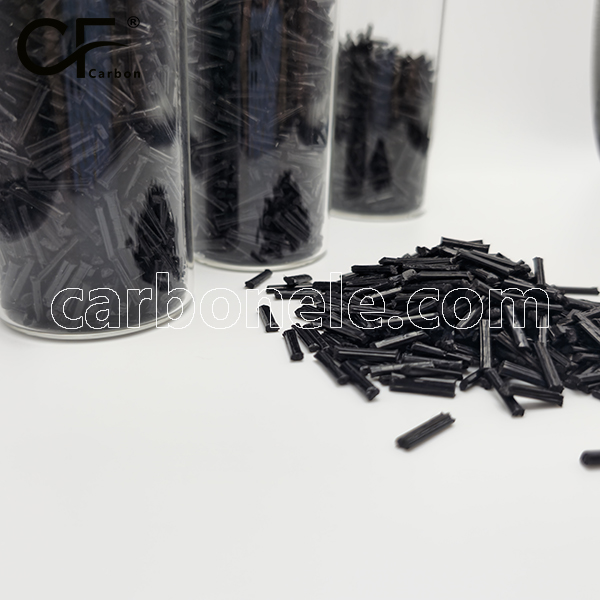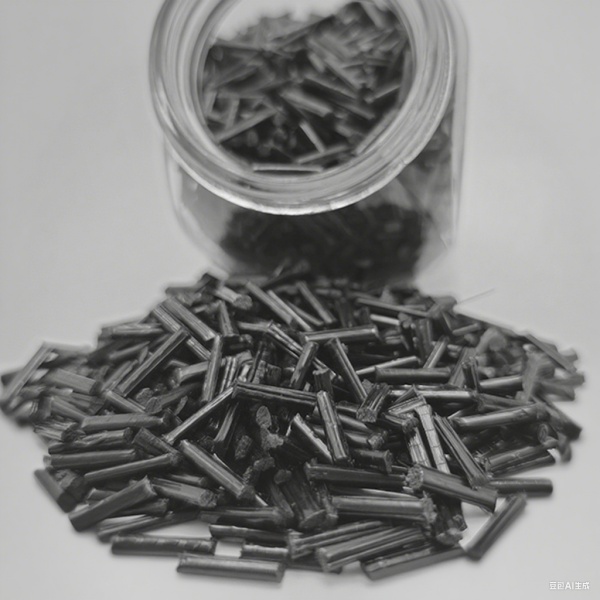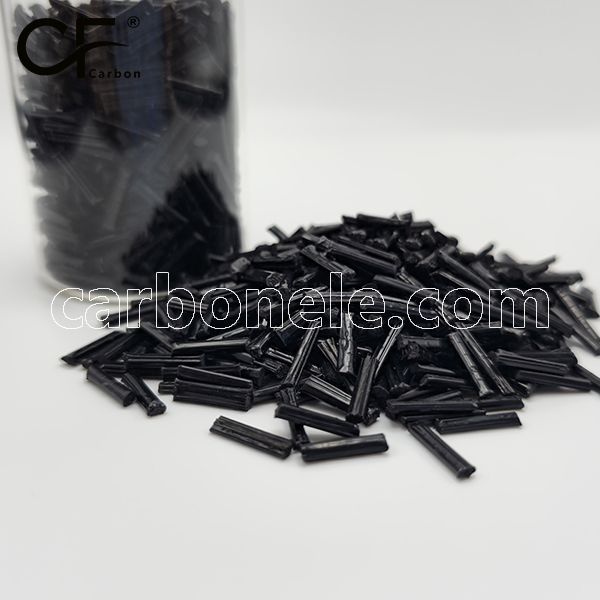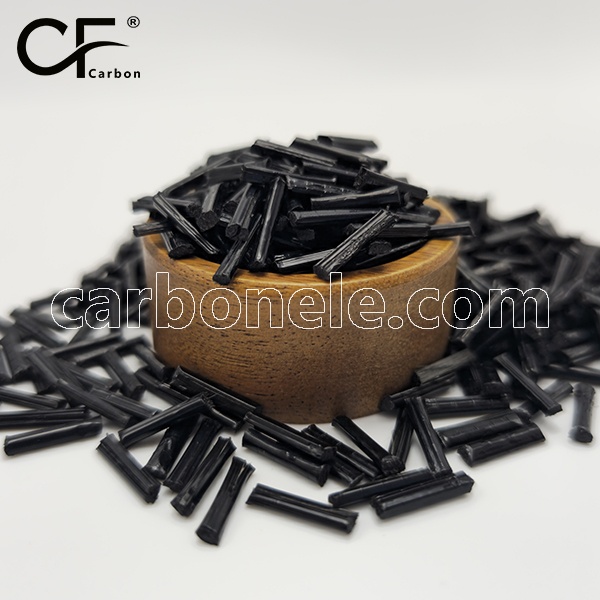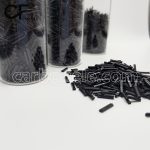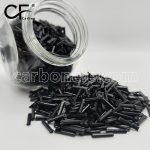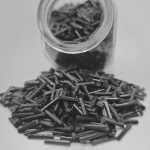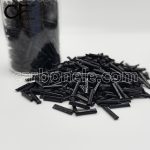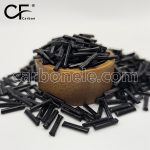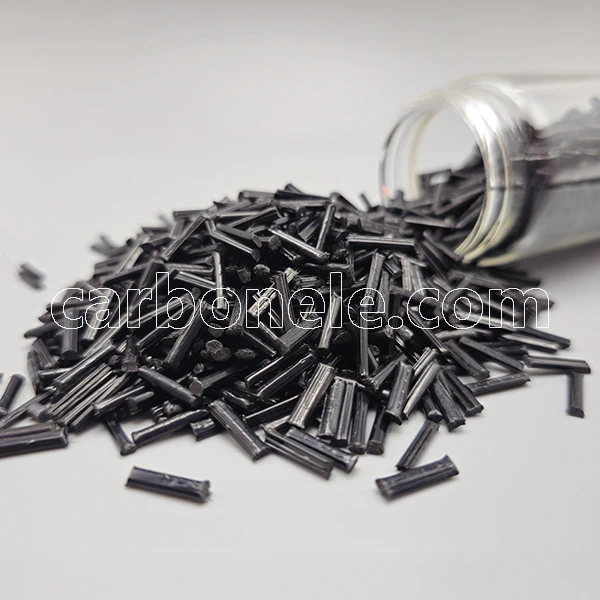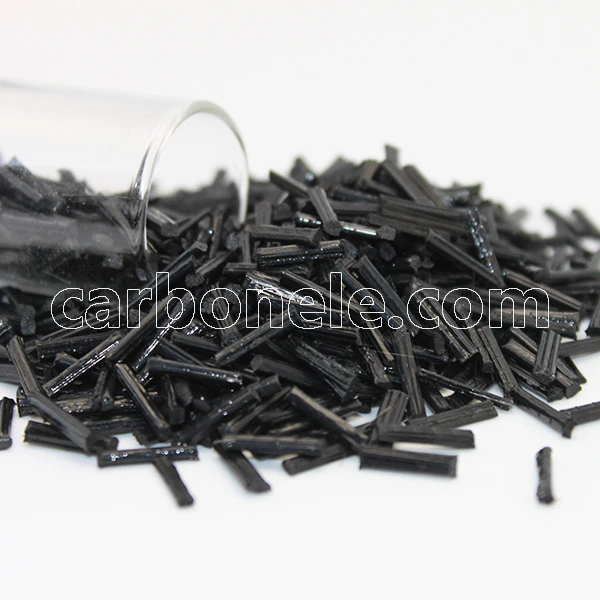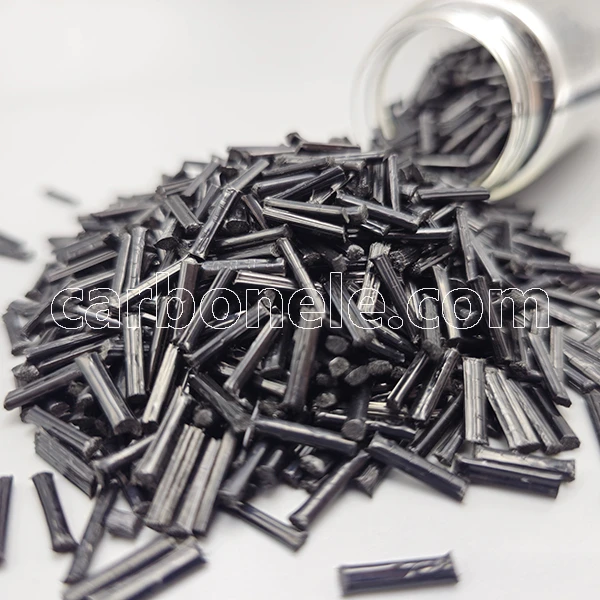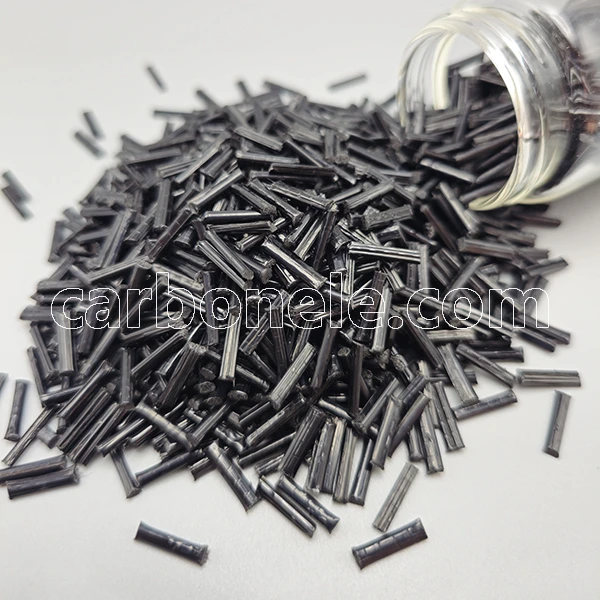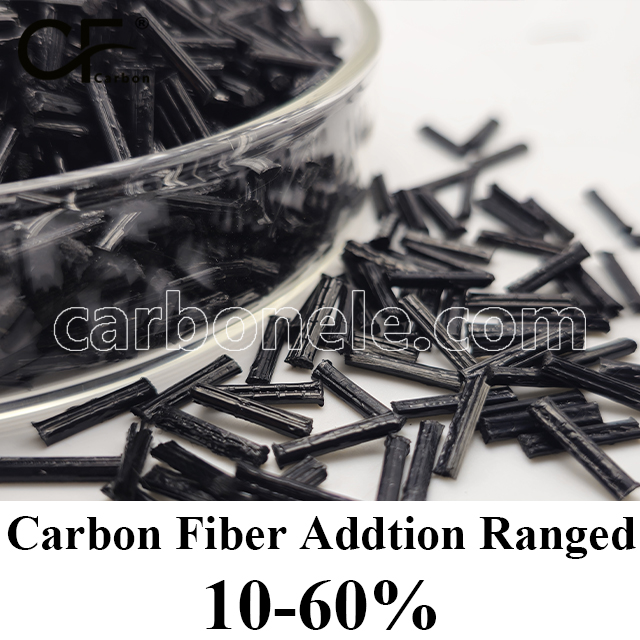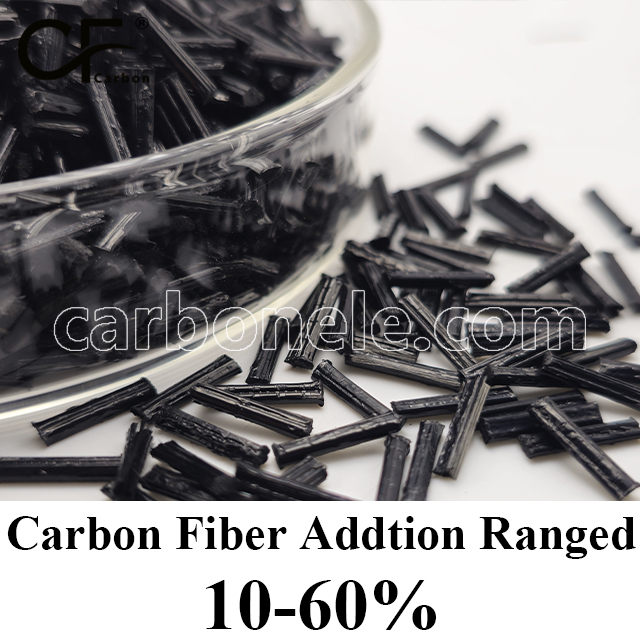The friction coefficient of PEEK-LCF is lower than that of pure PEEK due to the carbon fiber reinforcement, which acts as a solid lubricant. While PEEK typically has a friction coefficient of around 0.3 – 0.4, PEEK-LCF10 (10% carbon fiber) usually has a coefficient in the range of 0.2 – 0.3, offering improved wear resistance and making it more suitable for high-load, high-friction applications.

PEEK-LCF30 Composite – Aerospace-Grade Heat-Resistant Parts
PEEK-LCF30 composite combines high-performance PEEK with long carbon fiber reinforcement to deliver aerospace-grade heat resistance, exceptional strength, and lightweight durability. Ideal for jet engine housings, structural mounts, and precision aerospace components, PEEK-LCF30 ensures reliable performance under extreme temperatures and mechanical stress.
- Model number: PEEK-LCF-BCA3
- Matrix Resin: Polyetheretherketone (PEEK)
- Reinforcing Filler: Carbon fiber
- Appearance: Granules
- Grade: Injection/extrusion grade
- Packaging: 25kgs/bag
PEEK-LCF30 Composite—Aerospace-Grade Heat-Resistant Parts
Introduction to PEEK-LCF30
PEEK-LCF30 is a high-performance composite material that combines the advanced engineering capabilities of PEEK with the enhanced mechanical properties of long carbon fiber reinforcement. Known for its exceptional thermal stability, outstanding strength-to-weight ratio, and superior wear resistance, PEEK-LCF30 is engineered for environments where both heat resistance and structural integrity are critical.
By leveraging the advantages of PEEK and carbon fiber, PEEK-LCF30 delivers unmatched reliability in demanding applications. This makes it a material of choice for industries that require parts to maintain performance in extreme operating conditions, particularly in aerospace engineering.
Why PEEK-LCF30 Excels in Aerospace Applications
The aerospace industry demands materials that perform consistently under high thermal stress, mechanical loads, and exposure to harsh chemicals. PEEK-LCF30 is designed to meet these demands, offering a unique combination of light weight, high rigidity, and exceptional heat resistance.
In aerospace components, weight reduction is directly linked to efficiency, while thermal stability ensures that parts maintain their shape and functionality in fluctuating temperatures. PEEK-LCF30 achieves this balance, making it ideal for components that face continuous mechanical stress and exposure to hot operating environments.
Key Benefits of PEEK-LCF30 in Aerospace Engineering
-
Maintains high strength at elevated temperatures
-
Resists wear and fatigue under continuous operation
-
Provides excellent chemical resistance to fuels, oils, and solvents
-
Reduces weight while increasing stiffness for structural components
-
Supports complex geometries for design flexibility
Example Application: Jet Engine Housing Components
A clear example of PEEK-LCF30 in use is within jet engine housing components. These parts face constant high temperatures, vibration, and exposure to aggressive chemicals during operation. Traditional materials may degrade under these conditions, but PEEK-LCF30 offers the durability and performance required for extended service life.
By manufacturing jet engine housing components from PEEK-LCF30, engineers achieve significant advantages. The composite’s heat resistance prevents deformation during prolonged exposure to hot exhaust environments, while its low weight helps improve fuel efficiency. Additionally, the rigidity of PEEK-LCF30 supports structural stability, ensuring that critical parts remain secure even in challenging flight conditions.
Structural Reliability with PEEK-LCF30
In aerospace engineering, component failure can result in costly downtime and safety risks. PEEK-LCF30 mitigates these concerns by delivering consistent mechanical performance even after repeated thermal cycles. Its inherent toughness helps absorb vibration while resisting micro-cracking over time.
Extended Applications of PEEK-LCF30 in Aerospace
While jet engine housing is a prime example, PEEK-LCF30 can be used in many other aerospace parts, such as
-
Interior cabin fittings that must endure temperature changes and wear
-
High-precision brackets and mounts for avionics systems
-
Lightweight panels for structural reinforcement
-
Bearing cages and wear-resistant sliding components
These applications highlight the versatility of PEEK-LCF30 in meeting various performance needs across the aerospace sector.
Manufacturing Advantages of PEEK-LCF30
PEEK-LCF30 is compatible with multiple advanced manufacturing methods, including injection molding, CNC machining, and additive manufacturing. This adaptability ensures that parts can be produced to tight tolerances while maintaining consistent quality.
Design Freedom and Precision
Design engineers can take advantage of PEEK-LCF30’s ability to form complex shapes without sacrificing performance. The material’s combination of light weight and rigidity allows for thinner wall sections and integrated structural reinforcements, resulting in optimized part designs.
Operational and Maintenance Benefits
Using PEEK-LCF30 can reduce maintenance needs, as the composite resists wear and maintains dimensional stability even after extended service. This means fewer part replacements and reduced downtime for aircraft, translating into cost savings and operational efficiency.
Conclusion: PEEK-LCF30 for the Future of Aerospace
PEEK-LCF30 stands out as an aerospace-grade composite that delivers heat resistance, strength, and durability in a lightweight form. By incorporating PEEK-LCF30 into critical components, aerospace manufacturers can meet stringent performance standards while improving efficiency and safety.
For industries where high performance under extreme conditions is non-negotiable, PEEK-LCF30 offers a proven, reliable solution. Its adaptability, structural reliability, and long-term performance make it an essential material for next-generation aerospace engineering.
If you want to get more information about PEEK-LCF60, you can visit our YouTube.
Strength between PEEK and PEEK-LCF
PEEK-LCF, reinforced with carbon fiber, offers higher tensile and flexural strength, stiffness, and wear resistance than pure PEEK. For example, PEEK-LCF10 (10% carbon fiber) has tensile strength around 200 MPa, making it ideal for high-performance, demanding applications.



Frequently Asked Questions
Carbon (Xiamen) New Material Co., Ltd. aims to provide buyers with "one-stop" worry-free high-quality services. Here you can find all information about carbon fiber engineering plastics. If you still have questions, please send us an email for consultation!
-
How can I contact the manufacturer of a product that interests me?
When you find a product you are interested in, you can contact the manufacturer directly by sending an email and we will get back to you as soon as possible.
-
How do I find the products that interest me?
All you need to do is enter the keyword, product name in the search window and press the Enter key on your keyboard. Your search results page will then be displayed. You can also search within the product category pages on the home page. Each category is divided into subcategories, allowing you to refine your search and find products that interest you.
-
Where will I find a buying guide?
Please contact our after-sales service directly and we will provide you with a comprehensive operating guide.
-
What are CF Reinforced Thermoplastic Composites?
CF Reinforced Thermoplastic Composites are materials where carbon fibers are incorporated into a thermoplastic matrix. They combine the strength and stiffness of carbon fibers with the processability and recyclability of thermoplastics. For instance, they are used in automotive parts like bumper beams.
-
What are the benefits of CF Reinforced Thermoplastic Composites over traditional composites?
The key benefits include faster production cycles, easier recyclability, and better impact resistance. They also offer design flexibility. An example is in the manufacturing of consumer electronics casings where complex shapes can be achieved more easily.
-
How are CF Reinforced Thermoplastic Composites processed?
Common processing methods include injection molding, extrusion, and compression molding. Injection molding is widely used for mass production. For example, in the production of small components for the medical industry.
-
What industries use CF Reinforced Thermoplastic Composites?
They are utilized in aerospace, automotive, medical, and sports equipment industries. In aerospace, they can be found in interior components. In the medical field, they might be used in prosthetics.
-
How does the carbon fiber content affect the properties of the composites?
Higher carbon fiber content generally leads to increased strength and stiffness but may reduce ductility. A moderate content is often balanced for specific applications. For example, a higher content might be preferred in structural parts of a race car.
-
What are the challenges in using CF Reinforced Thermoplastic Composites?
Challenges include higher material costs, complex processing equipment requirements, and ensuring uniform fiber dispersion. Issues with adhesion between the fibers and the matrix can also arise. An example is in achieving consistent quality in large-scale production.







